Ass Tool_SITHCCC043 Work eff as a cook
.doc
keyboard_arrow_up
School
Achieve Early College High School-- McAllen *
*We aren’t endorsed by this school
Course
(MATH 2412
Subject
Business
Date
May 16, 2024
Type
doc
Pages
25
Uploaded by AmbassadorElephant3586 on coursehero.com
SITHCCC043 – Work effectively as a
cook
Assessment Tool
Mode | Classroom Delivery
Assignment Cover Sheet
Student ID
Student Name
Unit
SITHCCC043– Work effectively as a cook Assessment Task - Title/Number
Trainer/Assessor
Date Submitted
Note
: Plagiarism/Cheating is a serious offence. If a student is found plagiarising/cheating, it may result in a penalty of suspension/cancellation of student’s enrolment. In submitting their work, students must be aware of college’s Plagiarism and Academic Misconduct Policy available in student handbook, college’s website and student administration
.
Declaration of Originality:
By submitting this assignment for assessment, I acknowledge and agree that:
This assessment task/work is submitted in accordance with the college’s Plagiarism and Academic Misconduct Policy
. I also understand the serious nature of academic dishonesty (such as plagiarism) and the penalties attached to being found guilty of committing such offence
No part of this assessment task/work has been copied from any other source without acknowledgement of the source
No part of this assessment task/work has been written by any other person, except to the extent of team and/or group work as defined in the unit/assessment task
A copy of the original assessment task/work is retained by me and that I may be required to submit the original assignment to the trainer/assessor upon request
The trainer/assessor may, for the purpose of assessing this assessment task/work:
o
Provide a copy of this assignment to another member of the faculty for review and feedback; and/or
o
Submit a copy of this assignment to a plagiarism checking service. I acknowledge that a plagiarism checking service provider may then retain a copy of this assessment task/work on its database for the purpose of future plagiarism checking
Late submission: Late submission without a prior approval of the trainer/assessor will not be accepted and may delay the assessment outcome. You may also need to resubmit work as per college’s Reassessment Policy
.
I declare that this assessment is my own work. Student signature:
Date:
------------------------------------------------------------------------------------------------------------------------------------------------------------------------------------------------------------------------------------------------------------------------------------------------------
Admin Use Only
Received | Date Stamp
Comments (if any)
SITHCCC043 – Work effectively as a cook
Assessment tool | V 1.1 |Nov 2022 I Review: Oct 2023
Australian English Colleges t/a Australian College of Hospitality and Business Management
Provider Code: 45215 | CRICOS Provider Code 03630A Page 2
of 25
Assessment Summary
Read all the instructions below before attempting the assessment task. Assessment tasks are tools used to determine if you have the knowledge and skills to complete tasks to industry standards within the workplace. Your trainer/assessor will help you throughout this task and it is your responsibility to provide enough evidence to justify a competent decision by the trainer/assessor. If you do not understand the questions or what is required, ask your trainer/assessor for assistance. For group assessments, all students are to contribute
to the assessment tasks. You can work in groups up to a maximum of four people.
You are to complete all tasks by the due date and assessments must have a coversheet attached. If you think
you do not have enough time to complete the tasks by the due date, discuss with the trainer/assessor the
reasons of why you cannot submit on time. Writing your responses
When answering questions, ensure that your answers are detailed enough to so the assessor can draw a
conclusion that you have the knowledge and/or skills to demonstrate competency. Handwritten answers must
be written in blue or black pen. When producing reports, ensure that your project has a title page, table of
contents, page numbers, reference list, ensuring that your answers thoroughly match the questions asked. Answer all questions in your own words to avoid plagiarism. Plagiarism is copying someone else’s work or
ideas and saying that it your own work. Sources of work must be properly referenced, outlining the source of
your ideas. Penalties may include having to resubmit the assessment task again, repeating the Unit of
competency, or for repeat plagiarism, expulsion from Australian College of Hospitality & Business
Management. Marking of Assessments
On submission of your assessment will be marked for a result of either Satisfactory (S) or Not Yet Satisfactory
(NYS). If you receive a NYS result, you will be asked to redo the tasks again. To achieve a competent result with
this unit, all tasks need to be completed and marked as satisfactory. Your trainer/assessor will provide
feedback to you on each task, outlining where you must improve to achieve a Satisfactory (S) result. When all
tasks are marked as Satisfactory (S), you will receive a result of Competent (C) for this unit otherwise, you will
be marked Not Yet Competent (NYC). Assessments submitted to the trainer/assessor after the due date may
not be accepted, and you may have to pay a resubmission fee / adjustment may apply. Students with Special Needs
If leaners/learners have any special needs (e.g. physical disability, learning difficulty) regarding assessment, they should be directed to discuss these with the Course Coordinator. The college will endeavour to make all possible and reasonable adjustments to any aspect of assessment in order to address those needs. Some examples of additional support could include:
Language, literacy and numeracy (LLN)
Assistive technology
Additional materials or tutorials
Assistance in using technology for online delivery components.
Reasonable adjustment
Reasonable adjustment refers to any modification made to the learning environment, certification requirements, training delivery or assessment method to help learners with a disability access and participate in education and training on the same basis as those without disability (IBSA, 2015). The Disability Standards for Education 2005 were formed under the Disability Discrimination Act 1992. They clarify the obligations of training providers to ensure that learners who have a disability are able to access and participate in education and training on the same basis as those without disability.
Some examples of reasonable adjustments could include:
SITHCCC043 – Work effectively as a cook
Assessment tool | V 1.1 |Nov 2022 I Review: Oct 2023
Australian English Colleges t/a Australian College of Hospitality and Business Management
Provider Code: 45215 | CRICOS Provider Code 03630A Page 3
of 25
Personal support services, e.g. a reader, Auslan interpreter, a scribe
assistive technology or special equipment, e.g. screen readers, magnifiers, alternative keyboards
modifying the presentation method, e.g. visual, oral, print, electronic
adjustments to timeframes, e.g. providing materials prior to class, extended time limits
adjustment of the physical environment, e.g. specific furniture, arrangement of classroom.
The determination of “reasonableness” requires judgement that must take into account the impact on the RTO
and the need to maintain the integrity of the qualification. While reasonable adjustments can be made to the ways in which evidence of performance is gathered and demonstrated, the criteria for making Competent/Not Yet Competent decisions (and/or awarding grades) should not be altered in any way. That is to say, the standards expected should be the same irrespective of the group and/or individual being assessed (Disability Standards for Education 2005).
Skill Recognition and Credit Transfer
Appropriate credit(s) may be granted to eligible students against each unit of competency on presentation of evidence of successful completion of the same unit in an equivalent or higher qualification. Under the Australian Qualifications Framework, this qualification recognises competencies achieved as part of a Nationally Recognised Qualification from other institutes or universities.
Students may also apply for Recognition of Prior Learning (RPL) by providing evidence that they have the required skills and knowledge in the specific areas of competency through work/industry experience and/or completed eligible assessments in equivalent or higher qualification. Please refer to college’s RPL/Credit Transfer Policy for more information and applicable procedures. The policy is available either through the faculty coordinator or college’s website
Academic Policies and Procedures
Applicable policies and procedure related to this course including plagiarism, assessments, appeals and complaints, can be found with the course coordinator as well as in the “Policies and Procedures” section of the
college’s website.
Submission of Work
All the written works must be submitted in a hard copy, and an additional soft/electronic copy if required by the trainer/assessor, with an accompanying “Assessment Cover Sheet”. Each Assessment Cover Sheet should be signed by the student and must contain student details and date of submission. Material submitted for assessment—Word processed assignments, reports, essays, projects, etc. must contain student’s name, ID (if available). Within the context of these assessment tasks, the assessor fulfils the role of client, manager or supervisor, as applicable. Work submitted for “approval” within this context must demonstrate care and attention to detail, such that the student inspires confidence that the work is being undertaken competently. Where soft copy/electronic files are submitted, students are encouraged to name the files according to established procedure. This would typically include a course or unit code, assessment or submission code, and in the case of multiple files an alphanumeric identifier. Multiple files may also be required to be submitted within an enclosing folder (with similar, appropriate naming conventions) or archive format—e.g. zip. Follow submission guidelines in each assessment task for specific instructions.
SITHCCC043 – Work effectively as a cook
Assessment tool | V 1.1 |Nov 2022 I Review: Oct 2023
Australian English Colleges t/a Australian College of Hospitality and Business Management
Provider Code: 45215 | CRICOS Provider Code 03630A Page 4
of 25
Unit Overview
This unit describes the performance outcomes, skills and knowledge required to work as a cook. It incorporates all aspects of organising, preparing and cooking a variety of food items across different service periods and menu types; using a range of cooking methods and team coordination skills. The unit integrates key technical and organisational skills required by a qualified commercial cook. It brings together the skills and knowledge covered in individual units and focuses on the way they must be applied in a commercial kitchen.
The unit applies to cooks working in hospitality and catering organisations. This could include restaurants, educational institutions, health establishments, defence forces, cafeterias, kiosks, cafes, residential caterers, in
flight and other transport caterers, and event and function caterers. Menu types may be classical, contemporary or ethnic and service may be formal or informal.
It applies to individuals who work under the guidance of more senior chefs. They demonstrate autonomy and judgement to complete routine activities and take limited responsibility in known and stable contexts within established parameters.
The skills in this qualification must be applied in accordance with Commonwealth and State or Territory legislation, Australian standards and industry codes of practice.
Learning Outcomes
On successful completion of this unit, the learner/trainee will be able to;
Organise and prepare for food service or production
Cook and present menu items for food service or production.
Complete end of shift requirements.
Deal effectively with issues, problems and conflict in the kitchen.
As well as demonstrating the performance criteria, to be assessed as competent, the learner must demonstrate their ability to apply the required knowledge and skills in a range of situations. These are summarised in the Competency Standards section below.
Prerequisite Requirements
Unit Code Unit Title SITHCCC027
Prepare dishes using basic methods of cookery
SITXFSA005
Use hygienic practices for food safety
Performance Criteria
The following performance criteria specify the required level of performance for each of the elements of competency:
Element
Performance Criteria
1. Organise and prepare for food service or production
1.1. Determine and calculate ingredient quantities to meet organisational requirements for quality and style according to recipes and specifications.
1.2. Complete mise en place lists that are clear, complete and SITHCCC043 – Work effectively as a cook
Assessment tool | V 1.1 |Nov 2022 I Review: Oct 2023
Australian English Colleges t/a Australian College of Hospitality and Business Management
Provider Code: 45215 | CRICOS Provider Code 03630A Page 5
of 25
appropriate to the situation.
1.3. Liaise with other team members about menu requirements,
workgroup and job roles.
1.4. Follow a work flow to maximise efficiency, taking into consideration time, resources and the roles and responsibilities of other team members.
1.5. Complete food organisation and preparation according to different workgroup, food production and service requirements
.
2. Cook and present menu items for food service or production.
2.1. Select and use appropriate commercial equipment to produce menu items in line with manufacturer specifications.
2.2. Cook menu items according to menu type and service style, using appropriate cookery methods, adjusting where required.
2.3. Adjust menu items and ingredients to meet special requests
or dietary requirements of customers.
2.4. Produce menu items to meet customer expectations of quality, appeal of presentation and timeliness of delivery.
2.5. Work supportively as part of a kitchen team and delegate tasks appropriately, in a manner that promotes cooperation and
good relationships.
2.6. Follow workplace safety and hygiene procedures according to organisational and legislative requirements.
2.7. Maintain cleanliness and tidiness of the work environment.
3 Complete end of shift requirements.
3.1. Complete end of shift pack down according to organisational procedures.
3.2. Store food items appropriately to minimise food spoilage, contamination and waste.
3.3. Participate in post-shift debrief or handover, encouraging, acknowledging and acting on constructive feedback.
4. Deal effectively with issues, problems and conflict in the kitchen.
4.1. Respect differences in personal values and beliefs, linguistic and cultural differences and their importance in the development of relationships.
4.2. Identify issues, problems and conflict encountered in the workplace.
4.3. Seek assistance from workgroup members when issues, problems and conflict arise and suggest possible ways of dealing
with them as appropriate or refer them to the appropriate person.
Performance Evidence
Evidence of the ability to complete tasks outlined in elements and performance criteria of this unit in the context of the job role, and:
safely and hygienically prepare, cook and serve menu items for a minimum of 48 complete service periods in a commercial kitchen, that cover a combination of:
breakfast
dinner
lunch
during the above service periods, prepare, cook and present items for at least two of the following different menu styles:
à la carte
set menu
SITHCCC043 – Work effectively as a cook
Assessment tool | V 1.1 |Nov 2022 I Review: Oct 2023
Australian English Colleges t/a Australian College of Hospitality and Business Management
Provider Code: 45215 | CRICOS Provider Code 03630A Page 6
of 25
Your preview ends here
Eager to read complete document? Join bartleby learn and gain access to the full version
- Access to all documents
- Unlimited textbook solutions
- 24/7 expert homework help
Related Questions
Please no written by hand solutions
In a recent commercial, a weight-loss company featured testimonials touting their “miracle shake” nutritional supplement.
Satisfied Customer
Time (days)
Weight loss (kg)
Sarah, from Toronto
30
11
Zack, from New York
45
16
Eli, from Detroit
90
36
Yvette, from Montreal
10
4.5
Lynn, from San Diego
30
8.5
Kulwinder, from Vancouver
60
20
The commercial claims that the miracle shake will provide guaranteed weight loss.
a) Use this data to determine the correlation between time on the diet and weight loss (either the Spearman's Rank Coefficient, or the PPMCC, but state which you are calculating. You are welcome to use a spreadsheet).
b) Does the correlation imply that the miracle shakes cause weight loss? Identify any possible outliers.
arrow_forward
Volumetric Glassware: Utility and Calibration (Dry Lab)
Table B1: Calculation of a 100-mL Volumetric Flask.
temperature of the Distilled H2O (°C)
27
density of distilled H2O at calibration temperature
mass (g) of volumetric flask + distilled H₂O
Trial 1
198.5893
Trial 2
198.6114
Trial 3
mass (g) of dry volumetric flask
98.6563
98.7503
198.6001
98.7145
mass (g) of distilled H₂O
m true g
calculated volume of water dispensed, cm³
corrected volume, V20 °c, cm³
average corrected volume, V20 °C, cm³
standard deviation (4 sig figs)
%RSD (2 sig figs)
arrow_forward
Sanjeevini is a 100 bed hospital established 10 years ago and is performing well. Now the hospital is facing trouble in sourcing inpatients due to various reasons, one of them being improper inpatient nursing care. So the hospital management plans to intervene to improve the inpatient Care Experience.
QUESTION: Develop a questionnaire to study the patient satisfaction in the hospita
arrow_forward
on 1- Question 111 of 120 120
Revieting A Questions arisan
A mortgage loan originator (MLO) who is also a real estate broker and refers a customer to a settlement
services provider owned by their real estate brokerage must identify this relationship to a borrower on which c
the following disclosures?
АО Initial loan estimate
B Special information booklet
CO Third-party service providers
DO Affiliated business arrangement
0:19:42
arrow_forward
Instruction: Prepare a check sheet to analyze the data below from customer complaints, then prepare a list of recommendations that will address these complaints.
Case: Tip Top Markets
Tip Top Markets is a regional chain of supermarkets located in the southeastern United States. Karen Martin, manager of one of the stores, was disturbed by the large number of complaints from customers at her store, particularly on Tuesdays, so she obtained complaint records from the store’s customer service desk for the last nine Tuesdays.
June 1
out of orange yogurt
produce not fresh
bread stale
lemon yogurt past sell date
checkout lines too long
couldn’t find rice
overcharged
milk past sell date
double charged
stock clerk rude
meat smelled strange
cashier not friendly
charged for item not purchased
out of maple walnut ice cream
couldn’t find the sponges
something green in meat
meat tasted strange
didn’t like music
store too cold…
arrow_forward
Background: Data about the frequency of adverse events related to inappropriate care in hospitals come from studies of medical records as if they represented a true record of adverse events. In a prospective, observational design we analyzed discussion of adverse events during the care of all patients admitted to three units of a large, urban teaching hospital affiliated to a university medical school. Discussion took place during routine clinical meetings. We undertook the study to enhance understanding of the incidence and scope of adverse events as a basis for preventing them
Methods: Ethnographers trained in qualitative observational research attended dayshift, weekday, regularly scheduled attending rounds, residents' work rounds, nursing shift changes, case conferences, and other scheduled meetings in three study units as well as various departmental and section meetings. They recorded all adverse events during patient care discussed at these meetings and developed a…
arrow_forward
Background: Data about the frequency of adverse events related to inappropriate care in hospitals come from studies of medical records as if they represented a true record of adverse events. In a prospective, observational design we analyzed discussion of adverse events during the care of all patients admitted to three units of a large, urban teaching hospital affiliated to a university medical school. Discussion took place during routine clinical meetings. We undertook the study to enhance understanding of the incidence and scope of adverse events as a basis for preventing themMethods: Ethnographers trained in qualitative observational research attended dayshift, weekday, regularly scheduled attending rounds, residents' work rounds, nursing shift changes, case conferences, and other scheduled meetings in three study units as well as various departmental and section meetings. They recorded all adverse events during patient care discussed at these meetings and developed a classification…
arrow_forward
Instruction: Prepare a check sheet to analyze the data below from customer complaints, then prepare a list of recommendations that will address these complaints.
Case: Tip Top Markets
Tip Top Markets is a regional chain of supermarkets located in the southeastern United States. Karen Martin, manager of one of the stores, was disturbed by the large number of complaints from customers at her store, particularly on Tuesdays, so she obtained complaint records from the store’s customer service desk for the last nine Tuesdays.
arrow_forward
Q5: Elaborate on the main parts of the final thesis report?
kindly explain ed in details please
arrow_forward
SEE MORE QUESTIONS
Recommended textbooks for you
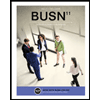
BUSN 11 Introduction to Business Student Edition
Business
ISBN:9781337407137
Author:Kelly
Publisher:Cengage Learning
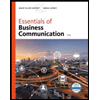
Essentials of Business Communication (MindTap Cou...
Business
ISBN:9781337386494
Author:Mary Ellen Guffey, Dana Loewy
Publisher:Cengage Learning
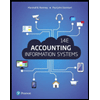
Accounting Information Systems (14th Edition)
Business
ISBN:9780134474021
Author:Marshall B. Romney, Paul J. Steinbart
Publisher:PEARSON
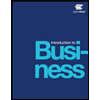
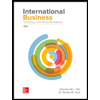
International Business: Competing in the Global M...
Business
ISBN:9781259929441
Author:Charles W. L. Hill Dr, G. Tomas M. Hult
Publisher:McGraw-Hill Education
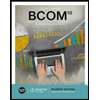
Related Questions
- Please no written by hand solutions In a recent commercial, a weight-loss company featured testimonials touting their “miracle shake” nutritional supplement. Satisfied Customer Time (days) Weight loss (kg) Sarah, from Toronto 30 11 Zack, from New York 45 16 Eli, from Detroit 90 36 Yvette, from Montreal 10 4.5 Lynn, from San Diego 30 8.5 Kulwinder, from Vancouver 60 20 The commercial claims that the miracle shake will provide guaranteed weight loss. a) Use this data to determine the correlation between time on the diet and weight loss (either the Spearman's Rank Coefficient, or the PPMCC, but state which you are calculating. You are welcome to use a spreadsheet). b) Does the correlation imply that the miracle shakes cause weight loss? Identify any possible outliers.arrow_forwardVolumetric Glassware: Utility and Calibration (Dry Lab) Table B1: Calculation of a 100-mL Volumetric Flask. temperature of the Distilled H2O (°C) 27 density of distilled H2O at calibration temperature mass (g) of volumetric flask + distilled H₂O Trial 1 198.5893 Trial 2 198.6114 Trial 3 mass (g) of dry volumetric flask 98.6563 98.7503 198.6001 98.7145 mass (g) of distilled H₂O m true g calculated volume of water dispensed, cm³ corrected volume, V20 °c, cm³ average corrected volume, V20 °C, cm³ standard deviation (4 sig figs) %RSD (2 sig figs)arrow_forwardSanjeevini is a 100 bed hospital established 10 years ago and is performing well. Now the hospital is facing trouble in sourcing inpatients due to various reasons, one of them being improper inpatient nursing care. So the hospital management plans to intervene to improve the inpatient Care Experience. QUESTION: Develop a questionnaire to study the patient satisfaction in the hospitaarrow_forward
- on 1- Question 111 of 120 120 Revieting A Questions arisan A mortgage loan originator (MLO) who is also a real estate broker and refers a customer to a settlement services provider owned by their real estate brokerage must identify this relationship to a borrower on which c the following disclosures? АО Initial loan estimate B Special information booklet CO Third-party service providers DO Affiliated business arrangement 0:19:42arrow_forwardInstruction: Prepare a check sheet to analyze the data below from customer complaints, then prepare a list of recommendations that will address these complaints. Case: Tip Top Markets Tip Top Markets is a regional chain of supermarkets located in the southeastern United States. Karen Martin, manager of one of the stores, was disturbed by the large number of complaints from customers at her store, particularly on Tuesdays, so she obtained complaint records from the store’s customer service desk for the last nine Tuesdays. June 1 out of orange yogurt produce not fresh bread stale lemon yogurt past sell date checkout lines too long couldn’t find rice overcharged milk past sell date double charged stock clerk rude meat smelled strange cashier not friendly charged for item not purchased out of maple walnut ice cream couldn’t find the sponges something green in meat meat tasted strange didn’t like music store too cold…arrow_forwardBackground: Data about the frequency of adverse events related to inappropriate care in hospitals come from studies of medical records as if they represented a true record of adverse events. In a prospective, observational design we analyzed discussion of adverse events during the care of all patients admitted to three units of a large, urban teaching hospital affiliated to a university medical school. Discussion took place during routine clinical meetings. We undertook the study to enhance understanding of the incidence and scope of adverse events as a basis for preventing them Methods: Ethnographers trained in qualitative observational research attended dayshift, weekday, regularly scheduled attending rounds, residents' work rounds, nursing shift changes, case conferences, and other scheduled meetings in three study units as well as various departmental and section meetings. They recorded all adverse events during patient care discussed at these meetings and developed a…arrow_forward
- Background: Data about the frequency of adverse events related to inappropriate care in hospitals come from studies of medical records as if they represented a true record of adverse events. In a prospective, observational design we analyzed discussion of adverse events during the care of all patients admitted to three units of a large, urban teaching hospital affiliated to a university medical school. Discussion took place during routine clinical meetings. We undertook the study to enhance understanding of the incidence and scope of adverse events as a basis for preventing themMethods: Ethnographers trained in qualitative observational research attended dayshift, weekday, regularly scheduled attending rounds, residents' work rounds, nursing shift changes, case conferences, and other scheduled meetings in three study units as well as various departmental and section meetings. They recorded all adverse events during patient care discussed at these meetings and developed a classification…arrow_forwardInstruction: Prepare a check sheet to analyze the data below from customer complaints, then prepare a list of recommendations that will address these complaints. Case: Tip Top Markets Tip Top Markets is a regional chain of supermarkets located in the southeastern United States. Karen Martin, manager of one of the stores, was disturbed by the large number of complaints from customers at her store, particularly on Tuesdays, so she obtained complaint records from the store’s customer service desk for the last nine Tuesdays.arrow_forwardQ5: Elaborate on the main parts of the final thesis report? kindly explain ed in details pleasearrow_forward
arrow_back_ios
arrow_forward_ios
Recommended textbooks for you
 BUSN 11 Introduction to Business Student EditionBusinessISBN:9781337407137Author:KellyPublisher:Cengage Learning
BUSN 11 Introduction to Business Student EditionBusinessISBN:9781337407137Author:KellyPublisher:Cengage Learning Essentials of Business Communication (MindTap Cou...BusinessISBN:9781337386494Author:Mary Ellen Guffey, Dana LoewyPublisher:Cengage Learning
Essentials of Business Communication (MindTap Cou...BusinessISBN:9781337386494Author:Mary Ellen Guffey, Dana LoewyPublisher:Cengage Learning Accounting Information Systems (14th Edition)BusinessISBN:9780134474021Author:Marshall B. Romney, Paul J. SteinbartPublisher:PEARSON
Accounting Information Systems (14th Edition)BusinessISBN:9780134474021Author:Marshall B. Romney, Paul J. SteinbartPublisher:PEARSON
 International Business: Competing in the Global M...BusinessISBN:9781259929441Author:Charles W. L. Hill Dr, G. Tomas M. HultPublisher:McGraw-Hill Education
International Business: Competing in the Global M...BusinessISBN:9781259929441Author:Charles W. L. Hill Dr, G. Tomas M. HultPublisher:McGraw-Hill Education

BUSN 11 Introduction to Business Student Edition
Business
ISBN:9781337407137
Author:Kelly
Publisher:Cengage Learning

Essentials of Business Communication (MindTap Cou...
Business
ISBN:9781337386494
Author:Mary Ellen Guffey, Dana Loewy
Publisher:Cengage Learning

Accounting Information Systems (14th Edition)
Business
ISBN:9780134474021
Author:Marshall B. Romney, Paul J. Steinbart
Publisher:PEARSON


International Business: Competing in the Global M...
Business
ISBN:9781259929441
Author:Charles W. L. Hill Dr, G. Tomas M. Hult
Publisher:McGraw-Hill Education
